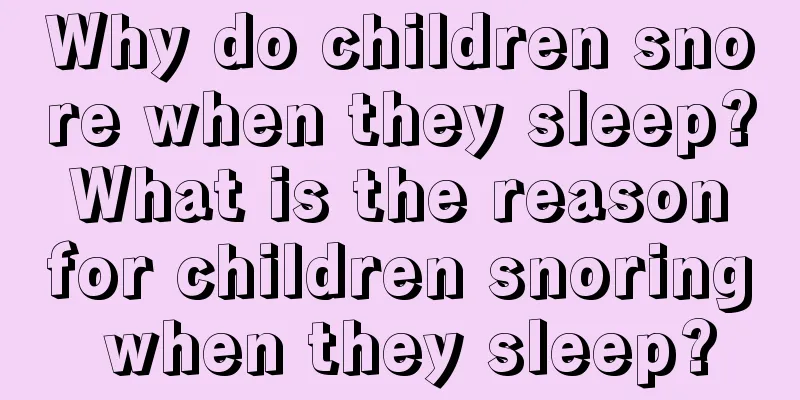How to choose the size of children's shoes? Different ages have different selection focuses

|
We all know that children's feet grow fast, so after buying shoes for children, we find that they can't wear them in two months, and we are even more afraid of buying shoes that don't fit. Let me share with you how to choose shoes for children? ! How to choose the size of children's shoesWhen helping children choose shoes, the question most mothers ask is: "What size shoes should I buy for my child?" Especially when it is inconvenient to try on the shoes, they are really afraid of buying shoes that don't fit. Choosing the right size is not that difficult! First, measure the length of your child's feet. You can easily measure it using the following method: take a piece of paper, ask the child to place his feet flat on the paper, and align the most convex part of the foot, that is, the "C-shaped convex point from the longest toe to the heel", as shown below: Experts remind that when putting on shoes, you should put your entire foot into the shoes, so the "C-shaped" protruding part behind the heel should also be put into the shoes. Remember to measure at this position when measuring the size. Next, add 0.5~1 cm to the measured foot length to get the shoe size you want. If the measured foot length is 17 cm, you will be advised to get a shoe size of 17.5 or no more than 18.5, because each shoe model has a different version, so there may be a slight difference. Experts warn that it is not recommended to add more than two centimeters at a time, because more than two centimeters is a very large length and may cause the following two problems: the first is that children's feet are more likely to be at risk of abrasion, and the second is that the shoes will break faster. You may find this a bit strange, and generally think that buying larger shoes will allow you to wear them for a longer time, but in fact, if there is such a large space inside the shoes, it means that the feet can slide inside the shoes, and sliding will cause impact, which will cause the shoe shape to change easily or be broken. Therefore, it is recommended that mothers choose a size that is one centimeter larger than the length of their children's feet, so that they will be most comfortable to wear! Just remember this tip when choosing shoesThere are hundreds of shoe styles on the market. How can you choose the most suitable pair for your baby? Experts provide a very easy-to-remember formula: "Only eat soft meat buns". As long as you master these five key points, you won't be afraid of stepping on landmines! 1. Anti-slip How to tell if a pair of shoes has enough anti-slip properties? First, you can look at the grooves on the sole to see if they are deep enough; then, you can actually try it on a table or other flat surface to see if it will slide when pushed. If the shoes can pass these two points, they are basically OK in terms of anti-slip properties. 2. Support The second point is "support", which is something most people may easily overlook. To see whether a pair of shoes provides enough support, you mainly look at the following two points: the support of the side of the shoe, and the hardness of the heel. The first is the side wall support part. Like the pair of shoes below, you can see that there are multiple stitches on the side, which consolidate the side wall and make the side stable. As for the heel support, mothers should pay special attention to the fact that the heel of the shoe should not be soft when pinched, so that when the child's foot is covered by the shoe, his walking posture will be correct. 3. Softness Regarding the softness, I believe many parents will think that they need to find "soft shoes" for their children, but please note that if the shoes are too soft, they cannot provide adequate protection and support. So what kind of "soft" should they be? In fact, you should pay attention to these two places: 1) The concave part of the front third of the shoe 2) The softness of the sole. The concave part of the front third of the shoe is soft enough to allow the child to smoothly carry the power forward when running and jumping. As for the soft lining of the sole, it is more familiar to the general public. When the sole is pressed down, there is an elastic support feeling. Therefore, mothers should pay attention to that the so-called softness does not mean that the whole pair of shoes is as soft as a quilt. Shoes that are too soft lack support and protection, and children are more likely to get injured when wearing them! 4. Breathable As for breathability, you will basically be fine as long as you try to avoid shoes made entirely of leather (because the breathability of leather is relatively poor) and choose shoes that are mainly made of mesh. 5. Coverage In summer, many parents will choose sandals for their children to keep them cool and breathable. However, it should be noted that if the sandals are poorly covered, they will easily become distorted after being worn for a while, and children may have inward-toed feet. More professional sports shoes or functional shoes can completely cover the feet, so they will not be easily distorted by the force of the feet, and can protect children's feet. 5. Key points for buying children's shoes Anti-slip: Look at the engraving/flat surface measurement Support: Sidewall support/heel softness Softness: One-third concave/sole softness Breathable: Full leather/mesh breathable is the most recommended Covering: Completely covered, not easily deformed by force The selection of children's shoes for different ages has different focuses1.Standing period For babies in the standing stage, it is recommended to wear sock shoes or shoes with high softness; because during the standing stage, children still rely on their limbs to move around. Therefore, if they suddenly lie down, if the shoes are too hard, the soles cannot bend smoothly, which will make them uncomfortable to wear and not good for the development of their feet. In contrast, if it is a sock-type style, it is easier for children to move because of its softness. But mothers should also pay special attention. There are many pure cloth shoes on the market. Because the sides are too soft and lack support, it is easy for children to step on the shoes after wearing them for a long time, which can easily make the children's feet tilt inward and the center of gravity crooked, which may lead to pigeon-toed in the long run. Therefore, in addition to paying attention to softness, you must also make sure that the side coverage and support are good enough to be suitable shoes. For example, the shoes in the picture below have additional support on the side to avoid the problem of being too soft! 2. Toddler swing period After children start to learn to walk, some mothers may find that their babies often fall down after walking. In fact, this may be because the shoes are not skid-resistant enough. At this time, the key to choosing learning shoes is whether the soles are skid-resistant enough. If they are skid-resistant enough, the chances of children's feet slipping can be reduced, thereby reducing the possibility of falling. As for the softness and coverage mentioned above, they are of course also the key points to pay attention to when choosing. 3. Small steps and fast progress After entering the "small steps and fast running period", the key point is the "only eat soft meat" principle mentioned above. In every aspect, you must raise the standard to choose; because children often run and jump, anti-slip, coverage, support, etc. are very important, otherwise it may be easy for the shoes to break, and more seriously, it may hurt the development of the feet. Therefore, don't be greedy for small bargains, and make sure that all aspects are met, so that you can have a pair of shoes that are suitable for children to wear for a long time! Conclusion: It is not that difficult to help your child choose a pair of good shoes. Remember the principle of "only eating soft meat buns" and choose according to different walking stages. Don't be afraid of making mistakes. You can choose a good pair of shoes for your baby and run and jump happily! |
<<: Baby's leg shape changes diagram Baby's leg shape development process diagram
>>: Can pregnant women eat crabs in the fourth month? What can't pregnant women eat crabs?
Recommend
What is the wedding night? Is it okay to get pregnant on your wedding night?
What is the sitting on the bed ceremony? Modern p...
Is it better for babies to drink mineral water or tap water? Which kind of water is better for babies?
Is it better for babies to drink mineral water or...
Can baby rice cereal be brewed with boiling water? Can baby rice cereal be eaten with milk powder?
Baby rice cereal is a very common product, especi...
Will children become stupid if they watch TV frequently? What is the reason?
It is normal for every household to have a TV, bu...
Why is there no foam in Sensodyne toothpaste? How to use Sensodyne toothpaste effectively?
It is said that Sensodyne toothpaste works well w...
Will having sex on the day of ovulation definitely lead to pregnancy? Is the pregnancy rate on the day of ovulation definitely high?
Many people should have discovered that some peop...
How many days does it take for a newborn to be one month old? ...
After a baby is born, people often ask if it is o...
Can I still have children if I have premature ovarian failure?
In the obstetrics and gynecology clinic, more and...
How to avoid parent-child conflicts when children violate norms
Educating children is a lifelong task for parents...
What are the ways to protect children's eyes? Tips for protecting children's eyes
Eyes are the windows to the soul, so we need to t...
When does postpartum uterine contraction pain begin? What is postpartum uterine contraction pain?
Postpartum uterine contraction pain is a very nor...
Can't have a baby with polycystic ovary? Pregnancy with polycystic ovary requires choosing the right time
Polycystic ovary syndrome can affect women's ...
What supplements should women take after miscarriage to help their bodies recover quickly?
Some women don’t even know they are pregnant. The...
Why is my skin dry, flaky and itchy after childbirth? What should I do if my skin is extremely dry after giving birth?
After giving birth, many mothers' family memb...
What should pregnant women do if their gums become inflamed and swollen? What are the changes in leucorrhea during early pregnancy?
Women also need to pay attention to many common p...









